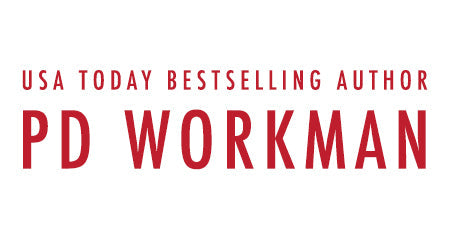Dark Water Under the Bridge - PP3 accessibility pack
Dark Water Under the Bridge - PP3 accessibility pack
Couldn't load pickup availability
Parks Pat could be in deep water on this case!
Detective “Parks” Pat has made a name for herself in solving the Fish Creek and Glenbow Ranch murders, so she is the one they call when a body turns up in Ralph Klein Park. She would be happy for the confidence placed in her if it weren’t for the fact that the body is in the water.
Detective Pat hates the water. She’ll need to get over that if she is going to be able to investigate this case properly. Preferably before the rest of the department figures out her weakness. There is a killer out there to be caught. Somehow she’ll have to get past her block to find him.
If you enjoy good solid mysteries, well-developed wonderful characters, and beautiful scenic backdrops, this is the perfect series for you. I have never been to any of these parks (or to Canada, for that matter) but reading these stories paints such clear pictures in my mind, I feel like I could go there and know my way around.
—txdoc
Looking for a police procedural set in picturesque Canada? Let Award-winning and Bestselling Author P.D. Workman take you to her favourite Calgary parks, as Métis detective Margie Patenaude investigates a murder in this fast-paced new series.
These short mysteries are just right for those days when you could use a break from your busy life. Take a walk in a Calgary park with Parks Pat.
Dive into in a new mystery today!
Returns
Returns
All sales are final.
If you have accidentally purchased the same ebook twice, please contact me and we will work it out with a refund or store credit.
Share

Accessibility Packs
Accessibility Packs are not yet available for every book.
If available, an Accessibility Pack contains three files:
- An eBook copy
- A pdf copy in OpenDyslexia font with other accessibility features
- An autonarrated (text to speech) audiobook in mp3 format
ACCESSIBILITY FEATURES OF EBOOK (VARIES BY DEVICE):
- Choose your typeface
- Change the font size
- Set your line spacing
- Light, dark, or sepia themes
ACCESSIBILITY FEATURES OF PDF
- OpenDyslexic font is designed to be more readable for those with dyslexia
- Rag right—not fully justified—to eliminate gaps between words
- Paragraphs not indented, separated by extra space
- No hyphenation
AUTO-NARRATED AUDIOBOOKS
Audiobooks allow readers to listen to a book rather than or simultaneously with reading the eBook or PDF file. They are also helpful if you are someone who needs to move around while learning.
Standard audiobooks are expensive to produce. There is nothing like a voice actor narrating a book. He can add nuance and humour and many other benefits to the audiobook. I still want to produce more human narrated audiobooks. However, in order to bring more of my catalog to you in audio form, I have used text-to-speech, computer-narration technology. This allows me to reach more readers who need assistance with reading. While auto-narration is improving, these audiobooks do sound robotic and do not contain the nuance of human voice narration. Some readers will find this too distracting, but for others, it is just the tool they need to help them enjoy more books.
Collapsible content
Click to Read Sample
CHAPTER 1
The sun was still low in the sky, orange light filtering into the kitchen. Margie “Detective Pat” Patenaude was sipping her morning coffee and staring into the depths of her fridge, trying to decide whether to make herself a bag lunch to take to the police station with her, or whether she would take a break and go find something over lunch. She hadn’t explored many restaurants near the office, so she wasn’t sure what was available. Not that she was that picky.
“The same things are in there as the last time you opened the door,” Christina teased, echoing the same words Margie used when her daughter stood staring vacantly into the fridge. “Nothing new is going to materialize while you stand there with the door open.”
“You’re a smart aleck,” Margie told her.
But Christina was right. Margie already knew what was in the fridge, and inspiration wasn’t going to strike just because she was standing there with the door open, letting all of the cold air spill to the floor and raising the energy bill. She sighed and closed it.
“I don’t know what I want today.”
“We need to go shopping. Get something good.”
“I think you’re right,” Margie agreed. They could go to the Co-op, or the No Frills down Seventeenth Avenue, and stock up on some easy to prepare meals. Margie never seemed to have the time or energy to make much when she got home from work.
The phone rang. Margie looked at it, hoping it would just be some telemarketer so she could ignore it. She didn’t want to have to deal with a real phone call so soon. She didn’t even have one cup of coffee down yet. But it was Detective Cruz, a Filipino-born cop on her team.
“Patenaude,” she answered briskly.
“Is this Detective ‘Parks’ Pat?” There was a note of amusement in Cruz’s voice.
“Parks Pat?” That was a new one. Margie understood where the nickname came from, of course. Since she had moved to Calgary, she had been primary on a murder in Fish Creek Park first, and then a similar one in Glenbow Ranch Provincial Park. They had not been related, except by circumstances, but both had been reported in the news, and it would seem that she had now earned her homicide team nickname. Parks Pat.
“That’s what they’re calling you,” Cruz acknowledged.
“Well, okay. It could be worse. What did you need?”
“Have you ever been to Ralph Klein Park?”
Margie let out a puff of breath. “Ralph Klein Park. No, I haven’t even heard about that one. Is it out there near Glenbow?”
“No, actually this one is close to you. That’s why I figured you might have been there. It’s new. Just opened in 2011.”
Margie thought about the little park she had visited while taking Stella out on a walk with Christina. It had a little pond and a splash park for young children. She couldn’t remember the name off the top of her head, but was sure it wasn’t the one that Cruz was talking about. “Another provincial park?”
“City of Calgary park, this one. Though it might be out of city limits, I’m not clear on that. It’s right on the eastern edge of the city, anyway. Think you could get out there?”
“Yes, of course. What… am I going to find there?”
“We’ve got another body. Sorry.”
Well, that was to be expected when she worked homicide. “Another body in another park? But we know it isn’t either of the same killers, because we already caught them both. They’re locked up where they can’t do any more harm. Was it the same cause of death?”
“You’ll have to get more information when you get out there, but preliminary indications are that it is not. No visible stab wounds on this one.”
“Good. I think if it was the same cause, I might have been a little freaked out.”
“We’re all a little on edge. I’m going to head out there before long too; I’ll back you up.”
Margie wondered why he hadn’t gone to investigate first. If he was the one who had taken the call. “I’m primary on this one? Why?”
He chuckled. “Because they asked for you in particular.”
“Me?”
“Parks Pat. They figured if it’s in a park, you should be the one in charge.”
“That’s just—”
“I know. And don’t worry, I’m sure that sooner or later you’ll get a body that wasn’t found in a park. But for now, that’s your assignment. Go to the park, make nice, find out what you can about our newest victim.”
CHAPTER 2
Christina assured Margie that she would be ready to get on the bus when it arrived and wouldn’t be late for school. She was grown up enough to deal with her own transportation. And Margie knew the fifteen-year-old could handle it. She had been going to the high school via bus since the first day, when the body at Fish Creek Park had been discovered. Margie had promised to drive her that day, but it had not worked out. As a teenager, Christina was as independent as Margie would let her be. Margie figured she should be thankful that she wasn’t getting constant requests to be driven here and there all over the city. Calgary sprawled over a huge area, and it could be challenging to get from one end to the other. So far, Christina had been content just riding the bus between the house and the school.
So Margie left Christina to finish getting ready and climbed into her car. She put the park’s name into the GPS. She quickly braided her long black hair and coiled it into a bun and waited for the GPS to start receiving coordinates from the satellite and plotting a course. She should be happy that she was being assigned to parks. She enjoyed being outside, connecting with nature. She liked to walk and hike and might even take Stella out there with her one day. For sure she was going to take the whole family out to Glenbow Ranch. When she was off and could arrange it around Christina’s school schedule. She would schedule a golf cart tour so that they could take Moushoom, Margie’s grandfather, with them. He would like it there. Sometimes, the Nakoda out that direction participated in ceremonies in the park. Moushoom would really love that. They didn’t speak the same language or come from exactly the same culture, but Moushoom would understand the symbols and the ceremonies.
The GPS beeped and the robotic voice directed Margie what direction to drive. She put all other considerations aside and focused on following the GPS instructions. Despite her Métis heritage, she had a terrible sense of direction and, if she made a wrong turn, it could take another twenty minutes to get back on track again. Not just because it was sometimes difficult to get turned around if you ended up going the wrong way on a highway or main thoroughfare, but also because she was totally capable of then getting back on the exact same road headed the wrong direction a second time. Or getting flustered and taking another wrong turn.
So she kept an eye on the GPS screen previewing the curves and intersections ahead so that she would not miss any exits or turn the wrong direction. She was glad that Cruz had mentioned it was on the edge of or just outside the city, or she might have started to panic when she ended up driving alongside golden brown fields in an area that felt too remote to bother with a park. But she remembered how Glenbow Park was down in the valley below the highway so, even with its vast size, it had been invisible until she had driven down the last road.
There were a couple of signs, and then she could see a few people walking or cycling to the left of the highway. She turned onto the access road into a grouping of trees. The road curved toward a building that looked like it was built with children’s blocks. The medical examiner’s van and the forensic team were there, pulled up onto the sidewalk. Rather than parking beside them, Margie followed the road past the building to a public parking lot. It probably filled up on a weekend, but early in the morning on a weekday, it was quiet. A few scattered vehicles. Unlike at the provincial parks, there were no Conservation Officers in gray shirts waiting to drive her in an electric golf cart to the scene of the crime. She had seen a small group of people gathered past the playground, so she knew where the body was and it wasn’t too far to walk.
Margie got out and strode towards the big education center. She walked through a small plot of short apple trees that declared itself The Orchard. The apples were turning from green to a rusty red. Some were scattered on the ground with two or three small bites out of them. Not the work of squirrels, by the size of the bite marks.
She stopped when she got to a railing and looked down. What Cruz had not bothered to mention to her was that Ralph Klein Park was a wetland. She stared down at water, which was nearly black and seemed bottomless. The education center jutted out over the water, walkways around it in two tiers up above the water. She swallowed and looked around to focus her mind somewhere else.
She circled the education center around the land side. There was an unusual playground like a pile of sticks, a zip line stretching away from it toward a pond or canal where the rest of the crime scene investigators were. Margie picked up her pace and strode toward them.
Bodies in the water could be ugly. Bloated up with gases, swollen and unrecognizable features, skin starting to separate from the flesh. Predator and insect activity.
But she would stay calm and keep things moving forwards. She would be strong and professional and there would be no issues.
One of the figures by the water waved at her. Margie nodded and joined them just outside the yellow tape perimeter. The group parted so that she could see the woman’s body. She was wearing a white blouse and dark blue or black pants. She was face-down in the water, close enough to the shore that they would be able to pull her out without hip waders.
“You’re Detective Pat?” a man in a Calgary Police Services uniform and black mask asked.
“Detective Margie Patenaude, yes,” she agreed. “Who discovered the body?”
“Early morning jogger. Over there.” He nodded to a young man in tights and a jacket sitting some distance away from the scene. “I’ve got a brief outline from him, but you can take his statement.”
“And this is where she was? He didn’t move her?”
“He says he didn’t touch her.”
“Okay, good. Do you think he did?”
The constable considered her question seriously. She took the moment of silence to read his name bar. Archambault. “I don’t think he did. It’s natural to reach out to someone like this, check to make sure they’re really dead and that it’s not just a mannequin. But his shoes were relatively dry.” Archambault looked down at his own shoes. His shoes and pant cuffs were covered in mud.
Margie raised her brows. “So, you did touch her?”
“Just did what I’m supposed to. Made sure she was good and dead, then came back here and called your team. Preserved the scene.”
There was a large area cordoned off with yellow tape. Margie would have made it bigger, but it was a judgment call.
“You checked for a pulse?”
“Just radial. It was obvious touching her that she was dead.”
“Rigor?”
“Yes. And… sodden. She’s been in there a few hours.”
Margie didn’t feel the need to touch the body herself to verify this. She felt sorry for Constable Archambault. But she’d had enough opportunities to check for life signs herself. It was one of the less enjoyable parts of being a law enforcement officer.
“Thank you.” She nodded to him.
He nodded back his thanks. Margie looked at the body again. A sweeping glance. She was trying not to commit more to long-term memory than she could help. “Did she have a purse? Wallet? Anything to identify her? There’s no missing person report?”
Everyone there shook their heads. Margie looked around. “Let’s protect any nearby garbage cans or bins. Extend the perimeter up and down the stream another… twenty-five meters. Watch for footprints. She didn’t fly into that water. Someone killed her here or dumped her here. We want to find out all that we can about that. Surveillance video in the parking lot?”
“We’re waiting for someone from the education center to get here. Apparently, they will have access to the security video,” one of the forensic guys advised.
“Okay.” Margie hoped that there was good video. They wouldn’t have been able to identify the killer in the Fish Creek case if they hadn’t had good video footage. Multiple pathways, several cameras in the parking lot, and even wildlife cams had enabled them to establish the people who had been in and out of the area the victim was killed in. That made it a lot more practicable to find the killer.
“I’ll let you guys work out the best way to get her out of the water and collect any evidence,” she told the forensic team and the doctor from the medical examiner’s office, whose nametag identified him as Adrian Galt.
They seemed to be happy that she wasn’t telling them how to do their job. Margie was sure they would be much better at working out the best procedure than she would. And she wouldn’t have to get any closer to the water herself.
Award-winning Canadian author P.D. Workman has written over a hundred addictive page-turners featuring diverse and divergent sleuths, high-stakes investigations, and stories that linger long after the last page.
Her books dive deep into characters’ minds while exploring timely social issues through fast-paced, emotionally charged plots. Readers praise her work for its powerful emotional truth combined with unputdownable suspense.




